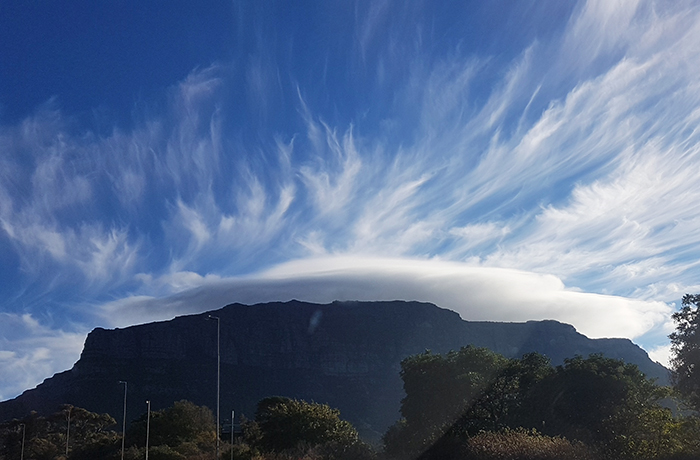Sand, sea and mountains – Cape Town has so many natural elements to lose yourself in. While you’re looking up, take in the dramatic clouds synonymous with the Mother City – they’re anything but normal. Have you ever wondered about the wispy formation that decorate the sky or the UFO-looking ones that appear ready to attack? They are in actual fact a direct product of weather patterns and climate. These are our favourite cloud formations that grace the Cape skies…
Table Mountain’s tablecloth
Folk law has it that the tablecloth was created by a smoking contest between the devil and a pirate known as Van Hunks. In reality, the cloud cover is called Orographic clouds which develop in response to the forced lifting of air by the earth’s topography (mountains for example). The air passing over a mountain move up and down as it moves downstream creating the tablecloth effect.
Lenticular clouds
Otherwise known as “saucer clouds” because of their UFO appearance. These clouds have a lens-like appearance and a saucer like shape. They form over high altitudes like mountain ranges. Pilots steer clear of lenticular clouds because of the turbulence that accompanies them. You can often see these clouds hovering above Lion’s Head and sometimes on the Twelve Apostles range. They are formed when air moves over mountains, cooling sufficiently for condensation to take place. These cloud formations don’t move, making them very different from other clouds.
Cirrus Clouds
These magical dots drape the sky on most balmy days. And as the day progresses the clouds become even more magical. Dusk is enchanting, and on some days the sun hits the ocean and sets it alight – the clouds look like the smoke emanating from that fire. Cirrus clouds are the most common found in Cape Town. These formations are made up of ice – they are thin, usually pristine white in colour and predict warm weather conditions. They are formed when it is high enough to be cold and freeze the water drops into ice.
It’s no wonder that the Mother City has been named one of the most beautiful cities to visit in the world.






